I have a confession to make.
For the majority of my video production work technically I don’t actually use a video camera.
Don’t get me wrong, I do still use traditional shoulder mount broadcast camcorders on a number of jobs. However, like thousands of other independent video producers and filmmakers out there I too have adopted a DSLR (digital-single-lens-reflex) or “Mirrorless interchangeable lens” stills camera as my main weapon of choice.
Let me explain…
The Day the Video Production World Got Upended
When the Canon 5D Mk II arrived in November 2008, with a function to shooting HD (high definition) video, it turned the world of independent filmmaking completely on its head. With its amazing capabilities at low light, ability to shoot with a really shallow depth of field and of course relatively cheap price tag (more on this later) – the camera suddenly made it extremely easy and affordable for people to shoot stunning cinematic videos.
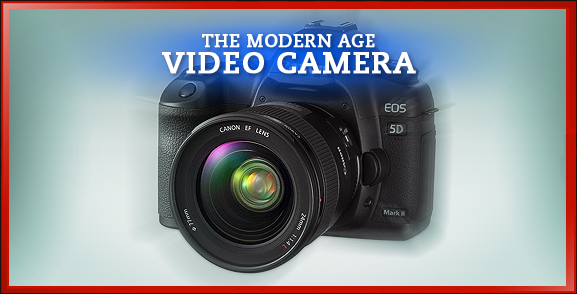
On paper, the primary function of the camera is to take still photographs and it isn’t technically classed as a video camera. It is not purpose designed to shoot video and does suffer pitfalls because of this. But I believe once you know and understand these pitfalls the positives of using it for video still massively outweigh the negatives.
Today, I film all my video productions in stunning 4K video with the Panasonic Lumix GH4 camera, a mirrorless interchangeable lens (DSLR-style) camera.
In this article I’ll run through what it is I personally like about shooting with a modern DSLR or interchangeable lens camera, what challenges I’ve faced and what massive advantages I think they can bring to your video productions.
The Incredible Advantages
The first main advantage is image quality. Traditional camcorders by nature have relatively small light sensors in them, which serve to process the images you shoot into digital information.
Large sensor DSLR cameras on the other hand have chips that can shoot video at frame sizes very similar to 35mm film, which is absolutely huge! This means very sharp and crisp images that hold much more detail.
Bigger Sensor = Better
Another advantage is that a larger sensor results in much more control over depth of field. This refers to the range in an image, from near to far, that is in focus. A popular manipulation of DoF (depth of field) you may have seen is when a person or object in the foreground is very sharp and in focus with the background completely blurry. This effect is employed frequently in cinema and advertising and is really useful when you want to make a specific subject or object stand out.

The camera is also extremely efficient at low light, which again is a result of the larger sensor. With the right lenses you can get really good performance from the camera in low light scenarios. This has become very useful for me when shooting events at night or naturalistic pieces where I want to use as little artificial light as possible.
Interchangeable Lenses
Speaking of lenses, interchangeable lens cameras (DSLRs and Mirrorless) use standard photography lenses and there is already a long established market for these with a whole multitude of different options available. It’s very easy when I’m filming to change lenses to suit different conditions.
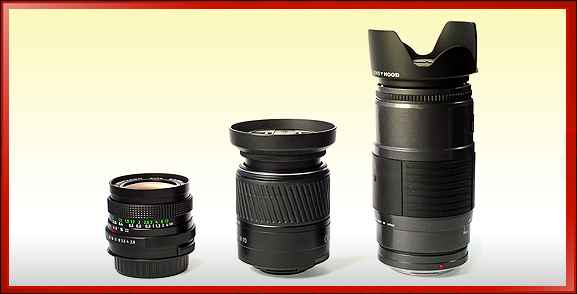
For example I use a standard zoom lens for any outside work during the day then change to a fixed width lens that is much better in low light for any night time shooting. You really don’t get the same amount of choice between lenses for dedicated broadcast video cameras. They’re often not as easy to swap between plus rarely ever as affordable.
Capable Design
Moving on from the technical advantages, there are also much more obvious physical advantages. By its nature the camera itself is much lighter and more portable than a standard broadcast shoulder mount camera.
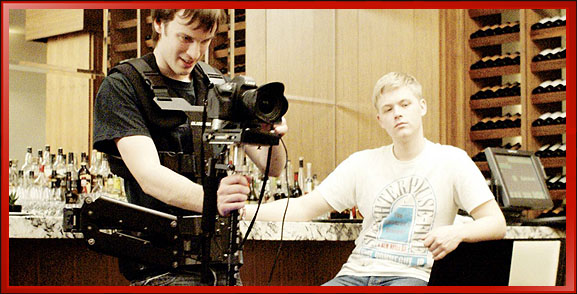
This means I can be much more flexible with where and how I shoot. Being a still image camera, primarily design to take still images and not record video, a negative is that it wasn’t designed with the ergonomics of a video camera in mind. However, to combat this I have invested in a shoulder rig solution which adds further points of contact between my shoulders and the camera, giving nice steady footage and making it much more comfortable to shoot with.
Stealth Duty: Unassuming Appearance
Another great advantage I’ve picked up on is purely psychological.
More often than not when I’m out and about at events or on the street people don’t think I’m actually shooting video! People regularly stop me and chat and they’re nearly always surprised when I explain it to them. The shape and profile of the camera alone means the majority of the public associate it purely with still photographs. This often works in my advantage because I find people aren’t as intimidated by it compared to a bigger shoulder mount camera. People are much more inclined to relax and be themselves around me more, resulting in much more natural footage.
Limitations of the DSLR Camera for Video
Like I mentioned at the start there are some definitely a number of limitations – DSLRs are far from being the perfect camera solution. Being a stills camera first it lacks a number of inbuilt features such as ND (neutral density) filters, zebras and essentially it lacks any decent audio functionality.
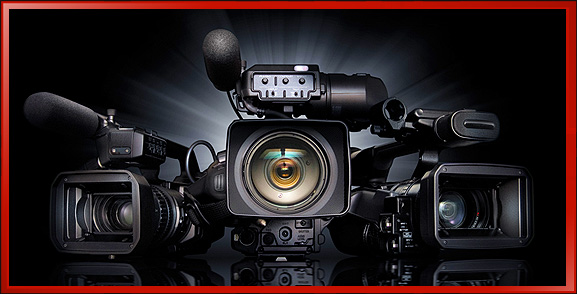
However, more and more companies are developing software and products to combat these pitfalls. For instance I own a variable ND filter which screws onto the front of a lens, giving me the same control as a broadcast camera. I have installed an updated firmware to the camera which now adds zebra functionality. To combat the sound issue I plug a microphone directly into the camera and often use an external recorder.
I can’t deny there are imaging issues particularly with rolling shutter and moiré/aliasing. These unwanted side effects are a bi-product of filming with a sensor designed for photography. By sampling so much image information, and squeezing it all down into a 1080p video, the camera can sometimes get confused with things like patterns on buildings or shirts. Also the camera struggles in certain situations to keep up with very fast moving objects.
However, by doing research and always consciously knowing what contribute when out shooting I can greatly limit their effects on my footage. The huge popularity of filmmaking with DSLRs has actually accounted for fixes being introduced into newer cameras on the market.
If you need, DSLR and Mirrorless cameras are compared against traditional fixed-lens cameras on our “What video equipment do I need?” guide:
DSLR Cameras vs. Conventional Camcorders
The ‘Pros' – Benefits of Interchangeable Lens Cameras:
- Significantly improved image quality (Larger sensor gives better quality images)
- Much more control over depth of field
- Widespread availability of lenses
- Much better low light performance
- Lighter, compact and much more portable
- Often less expensive than ENG-style camera
- Most people don’t think you’re shooting video!
The ‘Cons' – Potential Downsides of Interchangeable Lens Cameras:
- Ergonomically not designed to shoot steady video.
- Solution: purchase a simple shoulder rig for stabilisation
- Audio input/control severely limited.
- Solution: Invest in an external sound recorder/microphones
- Aliasing/moiré/rolling shutter.
- Solution: No real fix but do research. Do tests.
Understand the limitations of each camera and always keep them in the back of your mind when shooting to minimize the limitation's impact. In summary, I believe the benefits of using a DSLR for video are here for all to see.
DSLR-Style Video Cameras are Here to Stay
Obviously there are some pitfalls of using a camera not designed with video as a primary function. However, as more and more people are getting in on the secret, DSLR filmmaking is becoming a massive business. New hardware like the 4K-capable Panasonic Lumix line and software is coming out every day to offer workarounds and combat limitations for video users.
No camera is perfect, and different cameras are definitely better suited to different jobs. In my experience shooting with a interchangeable lens cameras is an extremely cheap and flexible way of filmmaking that’s suitable for most scenarios.
If you understand the camera then you can produce some stunning results at the fraction of the cost of a high end broadcast camcorder.

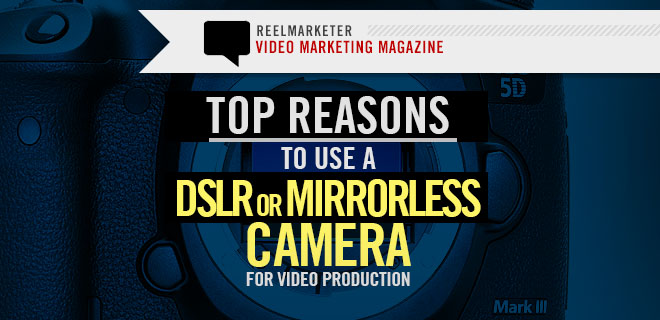

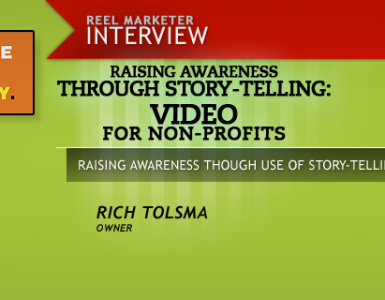



The cost effective and convenience is definitely a selling factor in their use and popularity.
DSLR and Mirrorless cameras certainly offer a compelling reason to evaluate them as a purchase when comparing them with a more traditional “handycam” or “ENG-style” video camera. Small size, discreetness and comparatively inexpensive lenses are also factors as well. Thank you for sharing DSLR Video Studio!